Fitness
Back and Spinal Fitness at PUSH as Rx leads the field with a laser focus on supporting our youth sports programs. The PUSH-as-Rx System is a sport-specific athletic program designed by a strength-agility coach and physiology doctor with a combined 40 years of experience working with extreme athletes.
The program is the multidisciplinary study of reactive agility, body mechanics, and extreme motion dynamics at its core. A clear quantitative picture of body dynamics emerges through continuous and detailed assessments of the athletes in motion and under directly supervised stress loads.
Exposure to the biomechanical vulnerabilities is presented to our team. Immediately, we adjust our methods for our athletes to optimize performance. This highly adaptive system with continual dynamic adjustments has helped many of our athletes return faster, stronger, and ready post injury while safely minimizing recovery times.
Results demonstrate clear improved agility, speed, decreased reaction time with greatly improved postural-torque mechanics. PUSH-as-Rx offers specialized extreme performance enhancements to our athletes no matter the age.

by Dr Alex Jimenez DC, APRN, FNP-BC, CFMP, IFMCP | Fitness, Natural Health, Wellness
If you’re thinking about adding a dog to the family, you have two good reasons to say “yes,” say researchers from the University of Alberta. Their study found that babies from families with pets � 70 percent were dogs � had higher levels of two microbes that protect against allergies and obesity.
There Is A Catch
“There’s definitely a critical window of time when gut immunity and microbes co-develop, and when disruptions to the process result in changes to gut immunity,” said pediatric epidemiologist Anita Kozyrskyj.
Her team’s research found that exposure to pets in the womb or up to three months after birth increases the amount of two bacteria, Ruminococcus, which has been linked to a reduced risk of childhood allergies, and Oscillospira, which has been linked to a lower risk of obesity.
“The abundance of these two bacteria were increased twofold when there was a pet in the house,” said Kozyrskyj, adding that the pet exposure was shown to affect the gut microbiome indirectly � from dog to mother to unborn baby � during pregnancy as well as during the first three months of the baby’s life. In other words, even if the dog had been given away for adoption just before the woman gave birth, the healthy microbiome exchange could still take place.
The study also found that the immunity-boosting exchange occurred even in three birth scenarios known for reducing immunity: C-section versus vaginal delivery, antibiotics during birth, and lack of breastfeeding.
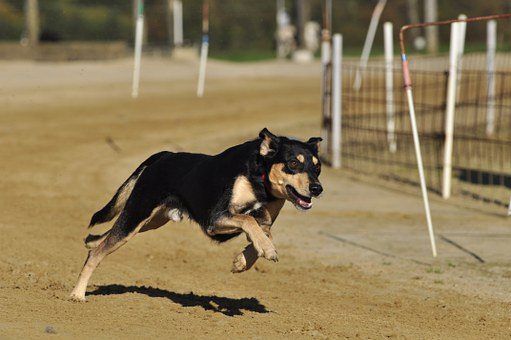
In addition, the study suggested that pets in the house reduced the likelihood of the transmission of vaginal GBS (group B Strep) during birth, which causes pneumonia in newborns and is prevented by giving mothers antibiotics during delivery.
Kozyrskyj theorizes that one day there may be a “dog in a pill” to help prevent allergies and obesity.
“It’s not far-fetched that the pharmaceutical industry will try to create a supplement of these microbiomes, much like was done with probiotics,” she said.
Previous research has also found that children raised in homes with pets have fewer allergies. A study published in Clinical & Experimental Allergy found that children who were exposed to pets before the age of six months had fewer allergy-related conditions such as asthma, hay fever, eczema, and upper respiratory infections as they grew older. Another study found that babies who lived in homes with pets had fewer colds and ear infections during their first year of life than babies living in homes without pets.
Pets are also good for mom and dad. Dogs have been found to lower the risk of heart disease, stress, depression, and chronic pain.
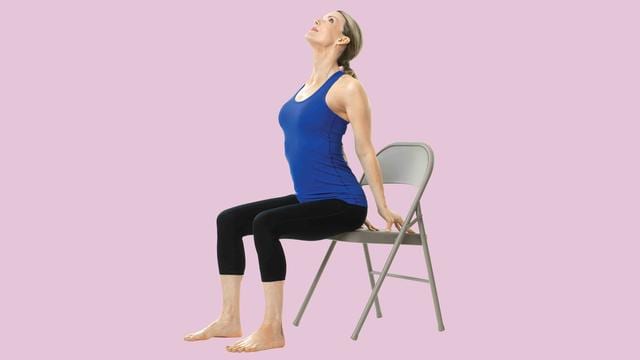
by Dr Alex Jimenez DC, APRN, FNP-BC, CFMP, IFMCP | Arthritis, Fitness, Wellness
“Oh, my aching back!” I can’t tell you how many of my students have back issues. And it’s no wonder, considering most of us spend our days tied to our desk chairs and parked in the same position in front of our screens hour after hour. The problem: Sitting for prolonged periods can cause or exacerbate back issues. When we’re stuck in this position, our hip flexors shorten in front and pull on our lower back. Not to mention, constant slouching can lead, over time, to compressed disks. That’s why it’s crucial to stretch your back every day. Here, four moves you can do right in your office.
RELATED: How Chair Yoga Can Help Your Arthritis
1. Backbend Arch
Start seated at edge of chair, placing hands behind you with fingers facing away from hips. Prop yourself up on fingertips, drawing sacrum in and up to lift lower back. Follow backbend all the way up chest to shoulder blades and open up entire front body. Hold and breathe for 8 to 10 breaths, then release.

2. Cat/Cow
Sit at edge of chair with feet flat on the floor. Place hands on knees and inhale, lifting chest and sticking hips out behind you. Lift gaze, open chest, and gently squeeze shoulder blades together (A). On an exhale, round chest, scoop in belly, and curl tailbone under as you drop head toward sternum (B). Repeat for a series of 10 cycles.
RELATED: 10 Yoga Poses to Do at Your Desk

3. Lower-Back Circles
Sit with feet hip-width apart and hands resting on knees (A). Inhale, then begin circling torso clockwise, making sure to initiate movement from base of spine (B). Complete 8 to 10 rotations. Stop and then repeat the motion, this time circling in a counterclockwise direction. Continue alternating for 2 to 3 minutes.

4. Roll-Downs
Sit with feet hip-width apart and hands hanging at sides (A). From head, start rounding down through spine (B). Exhale, letting forehead release forward and the weight of your head bring you over until top of head is by thighs (C). Inhale; slowly start stacking vertebrae as you round up to sit. Draw belly button to spine to protect back, and feel the articulation as you round up. Continue rolling down and up for 5 to 8 cycles.
Pin this entire workout for later:

Adapted from Chair Yoga: Sit, Stretch, and Strengthen Your Way to a Happier, Healthier You by Kristin McGee ($19; amazon.com). Copyright 2017 by Kristin McGee. Reprinted by permission of William Morrow, an imprint of HarperCollins Publishers.
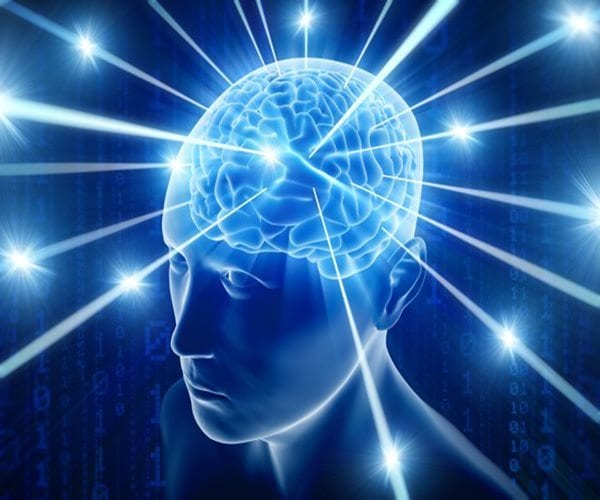
by Dr Alex Jimenez DC, APRN, FNP-BC, CFMP, IFMCP | Alzheimer's, Exercise, Fitness
(HealthDay News) — Healthy aging of the brain relies on the health of your heart and blood vessels when you’re younger, a new study reports.
People with risk factors for heart disease and stroke in middle age are more likely to have elevated levels of amyloid, a sticky protein known to clump together and form plaques in the brains of people with Alzheimer’s disease, the researchers said.
Amyloid In The Brain
MRI scans revealed larger deposits of amyloid in the brains of seniors who smoked, had high blood pressure, were obese, diabetic or had elevated cholesterol levels when they were middle-aged, said lead researcher Dr. Rebecca Gottesman. She’s an assistant professor of neurology at the Johns Hopkins University School of Medicine in Baltimore.
All of these risk factors can affect the health of a person’s blood vessels, otherwise known as vascular health, leading to hardening of the arteries and other disorders.
“Amyloid is what we think, by leading hypotheses, accumulates to cause Alzheimer’s disease. So this suggests that vascular risk in middle age may play a direct role in the development of Alzheimer’s disease,” Gottesman said.
Two or more risk factors nearly tripled a person’s risk of large amyloid deposits. One risk factor alone increased the likelihood of amyloid deposits by 88 percent, the study found.
Obesity
Obesity in particular stood out as a strong risk factor, on its own doubling a person’s risk of elevated amyloid later in life, said Steven Austad, chair of biology of aging and the evolution of life histories at the University of Alabama, Birmingham.
“In terms of one risk factor by itself, that turned out to be the most important one, which is interesting,” Austad said. “Twenty years ago obesity was not the problem that it is now, suggesting that 20 years from now things might be considerably worse.”
Gottesman and her colleagues examined data from nearly 350 people whose heart health has been tracked since 1987 as part of an ongoing study. The average age of the study participants was 52 at the start of the study. Sixty percent were women, and 43 percent were black. The average follow-up time was almost 24 years.
When the participants entered the study, none of them had dementia. About two decades later, they were asked to come back and undergo brain scans to check for signs of amyloid.
The researchers discovered a link between heart risk factors and brain amyloid. The relationship did not vary based either on race or known genetic risk factors for Alzheimer’s.
Poor Blood Vessel Upkeep
Heart risk factors that cropped up late in life were not associated with brain amyloid deposits. What a person does in their middle age is what apparently contributes to their later risk of elevated amyloid, not what happens later, Gottesman said.
The study did not prove a cause-and-effect relationship, but there are several theories why the health of a person’s blood vessels might be linked to Alzheimer’s.
Blood and spinal fluid contain amyloid, and some think that unhealthy blood vessels might allow amyloid to leak out of the bloodstream and into brain tissue, said Austad, a spokesman for the American Federation for Aging Research.
“The idea that the first injury to the brain is really an injury to the blood vessels of the brain has been around for a while, and this would support that, generally,” Austad said. “The amyloid plaques, you’re not seeing them inside the vessels. You’re seeing them outside the vessels, in the brain.”
Blood vessels also play a role in flushing out broken-down amyloid particles that naturally occur in a person’s brain, said Keith Fargo, director of scientific programs and outreach for the Alzheimer’s Association.
“You can imagine if there’s something wrong with your brain’s circulation, it could affect the clearance of this amyloid in some way,” Fargo said.
Hardened arteries also can lead to strokes or mini-strokes that affect the ability to think and remember in some people as they age, which contributes to dementia and Alzheimer’s, Gottesman said.
Based on these findings, people who want to protect their brain health should protect their heart health, and the sooner the better, Fargo said.
“You don’t want to wait until your 60s to start taking care of yourself. It has to be a lifetime commitment,” Fargo said.
The findings were published April 11 in the Journal of the American Medical Association.
SOURCES: Rebecca Gottesman, M.D., Ph.D., assistant professor of neurology, Johns Hopkins University School of Medicine, Baltimore; Steven Austad, Ph.D., chair of biology of aging and the evolution of life histories, University of Alabama, Birmingham, and scientific director, American Federation for Aging Research; Keith Fargo, Ph.D., director of scientific programs and outreach, Alzheimer’s Association; April 11, 2017, Journal of the American Medical Association
News stories are written and provided by HealthDay and do not reflect federal policy, the views of MedlinePlus, the National Library of Medicine, the National Institutes of Health, or the U.S. Department of Health and Human Services.

by Dr Alex Jimenez DC, APRN, FNP-BC, CFMP, IFMCP | Diets, Fitness
The types of cooking oils you eat may be sabotaging your health, making you lazy and setting you up to develop Type 2 diabetes, says a Canadian researcher.
Consuming high levels of polyunsaturated fatty acids (PUFAs) but not monounsaturated fatty acids (MUFAs), can make you lazy and fat, especially if you’re a woman, says Sanjoy Ghosh, a professor at the University of British Columbia’s Okanagan campus
For decades, heart disease was linked to saturated fats, which are found in meats and in full-fat products such as whole milk and butter. That belief caused the deliberate removal of saturated fatty acids from our diets, replacing them with MUFAs, found in avocado, nuts, seeds, and olives, and PUFAs, found in commonly used oils such as corn, sunflower, cottonseed, soybean, and canola. PUFAs are found in almost all convenience foods, including potato chips, cookies, cakes, and crackers.
Ghosh and his collaborator, UBC biologist and data analyst Jason Pither, examined data from 21 European countries. First, they studied pre-teen girls. Second, they examined the blood glucose levels of adult women. They also included other details such as the amount of time they spent watching television.
They concluded that there was a clear connection between the consumption of polyunsaturated fats and an increase in sedentary behavior, especially in the pre-teens, and an increase in diabetes among women.
“This data is extremely significant,” says Ghosh. “Nobody has made this connection and it’s time for an intervention. And if someone is beginning an exercise program without taking a close look at the fats, especially PUFA they are consuming, or changing what they’re eating, then it might be doomed to failure.”
The study was published in the Journal of Nutritional Biochemistry.
Recent studies have found that switching saturated fats for polyunsaturated fats didn’t lower the risk of heart disease — in fact, it may have raised it. A 2016 study examined the records of more than 9,400 people and found that while swapping saturated fats for vegetable fats like corn oil reduced cholesterol levels by 14 percent, it didn’t improve survival. In fact, those whose cholesterol was reduced the most had the highest risk of dying when compared to a control group that ate a diet high in saturated fats.
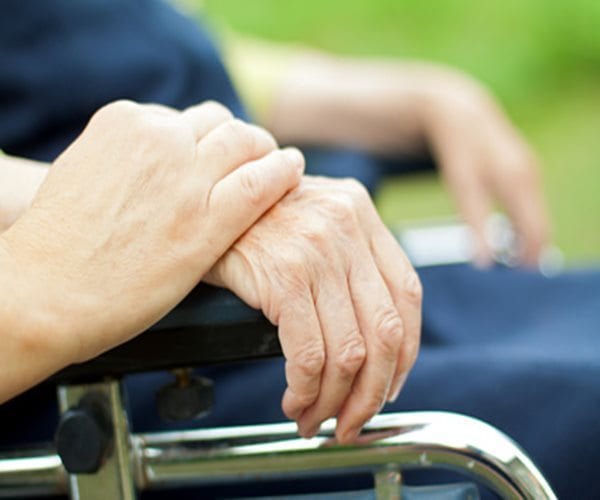
by Dr Alex Jimenez DC, APRN, FNP-BC, CFMP, IFMCP | Diets, Fitness
Being physically inactive raises the risk of losing the ability to perform activities of daily living – both before and after a stroke – according to results from a long-term U.S. study.
“Physical activity reduced the risk of dependence in both basic activities of daily living (for example, dressing and getting across a room) as well as instrumental activities of daily living (for example, managing money or grocery shopping), which are considered to be more cognitively demanding,” said lead author Dr. Pamela M. Rist from Brigham and Women’s Hospital and Harvard T.H. Chan School of Public Health in Boston.
“These instrumental activities of daily living can be important determinants of quality of life among stroke patients, so it is important to find factors which reduce the risk of dependence in these activities as well as in basic activities of daily living,” she told Reuters Health by email.
Rist’s team studied 18,117 individuals participating in the national Health and Retirement Study in an effort to find out whether physical activity and body mass index (BMI), a common measure of overweight and obesity, could predict disability.
During 12 years of follow-up, the amount of physical activity people did was not associated with the risk of stroke, but it was associated with the likelihood of being independent three years after a stroke.
Those who were physically inactive at baseline were significantly less likely to be independent at that point, compared with those who were physically active at baseline.
Somewhat surprisingly, this difference between inactive and active stroke survivors was also evident three years before their strokes, researchers report in the journal Neurology.
Obesity, in contrast, was associated with an increased risk of stroke, but it was not associated with loss of independence during the follow-up period, regardless of whether an individual suffered a stroke.
“Individuals can reduce their risk of dependence before and after stroke events by being physically active, which in our study was defined as participating in vigorous physical activity at least three times per week,” Rist said.
The researchers recommend further study to clarify whether increases in physical activity might also improve outcomes after a stroke.

by Dr Alex Jimenez DC, APRN, FNP-BC, CFMP, IFMCP | Fitness, Health, Wellness
Walk into any�HIIT�class or CrossFit box and chances are you�ll be asked to do a variation of a plyometric jump. Box jumps, frog leaps and tuck jumps help you improve your�VO2 max�(speed), flexibility and�range of motion. But that�s not all. Their explosive power works your entire body, while getting your heart rate up.
Kat Ellis, head trainer and instructor at�Uplift Studios�in New York City, says, �Plyometrics are a mix of stability and strength, and create a strong foundation for doing explosive�weightlifting�moves like the�clean and jerk�and�snatch.�
But if you�re not nailing down the form of these moves properly, you can risk injuring yourself and cause strain on your joints. That�s where tempo training comes in. Modulating movement based around a tempo allows the body to activate fast twitch muscle fibers and to learn to distinguish the difference between speed and power, Ellis explains. �The body finds a moment of explosive activation. For example if you�re doing a�push-up, concentrate on lowering the chest down for three seconds and pushing back up to a plank in one. The tempo, is 3-2-1, push.�
RELATED:�3 Fat-Blasting HIIT Workouts to Try Now
Plyometrics help develop�core strength�and joint stability, too. �Tempo training forces you to slow things down. You�re regressing the exercise to make sure your whole body is truly engaged,� Ellis explains.
According to the�National Academy of Sports Medicine, plyometrics are broken down into three phases: the eccentric phase, the amortization phase and the concentric phase. Take the box jump, for instance. The eccentric phase is when you�re in a half-squat position with your knees bent. When you drive from your heels to jump, that�s the amortization phase. The concentric phase is when you finally land on the box and release the energy and tension in your muscles. With that said, take Ellis�s lead, as she breaks down these three popular jumps.
RELATED:�3 Plyometric Moves That Turn up the Burn
Bust a Move: 3 Plyometrics Exercises, Broken Down
1. Frog Leaps


Progression 1
How to:�Stand with your feet a little wider than hip-distance apart with your toes slightly turned out to the sides. Raise your arms at your sides with your hands overhead and palms facing forward (a). Sit into a deep sumo squat with your butt back and down so your weight is evenly distributed from your arches to your heels (b). Press up from the squat and lift your right leg up to hip height, bending your right knee (c). At the same time, engage your right oblique muscles so you bring your right thigh towards your right elbow (d). Return to the starting position and repeat on the left side. Alternate for five reps on each side.
Progression 2
How to:�Sit back into a deep sump squat position with your hands overhead together and palms facing forward (a). Driving from your heels, jump up, bending your knees so your thighs touch or brush up against your thighs (b). Land softly into a sumo squat before jumping again (c). Do five to eight reps.
RELATED:�The Ultimate 20-Minute MetCon Workout
2. Tuck Jumps


Progression 1
How to:�Stand with your feet hip-distance apart with your toes facing forward (a). Sit into a squat with your arms at your sides raised to shoulder height, palms facing each other (b). As you stand up from the squat, lift your right leg to hip height with your right knee bent (c). At the same time, place one palm on top of the other to meet your right knee. Repeat on the left side (d). Alternate for five reps on each side.
Progression 2
How to:�Start in a squat position with your arms at shoulder height and palms facing each other (a). Jump up as high as you can, driving your knees towards your chest, almost touching the palms of your hands (b). Re-extend your legs to land softly on the ground (c). Do five to eight reps.
RELATED:�5 Plyo Box Exercises to Rev Your Fitness
3. Box Jumps


RELATED:�12 No-Bake Energy Bites Recipes
Progression 1
How to:�Stand behind a box or step with your feet shoulder-width apart and a slight bend in your knees (a). Step one foot at a time onto the box, keeping the slight bend in your knees, and then step back down one foot at a time (b). Do five reps.
Progression 2
How to:�Stand behind a box with your feet shoulder-width apart and a slight bend in your knees (a). Jump onto the box with both feet, landing with your knees slightly bent (b). Jump back down and repeat for five to eight reps. Note: If you�re doing this move in a CrossFit WOD, standard technique is to straighten your legs at the top of the box, standing tall, before hopping or stepping back down.
GIFs: Tiffany Ayuda / Life by Daily Burn
This article originally appeared on DailyBurn.com.
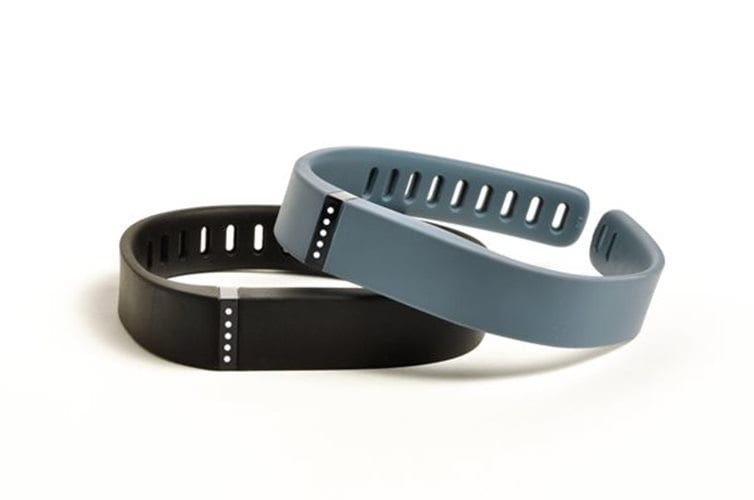
by Dr Alex Jimenez DC, APRN, FNP-BC, CFMP, IFMCP | Diets, Fitness
Some people who rely on fitness trackers to see how hard they work out may want to rethink this approach, according to a small study that suggests the increasingly popular devices may get more accurate heart rate readings when users are at rest than during exercise.
The study tested four popular wristbands, each of which has a light-emitting diode (LED) that measures heart rate from tiny changes in skin blood volumes by using light reflected from the skin.
Participants in the study – 40 healthy adults – wore two trackers on each wrist and compared resting and exercise heart rate readings on the devices to the gold standard used by doctors: an electrocardiogram (ECG or EKG) test.
At rest, the Fitbit Surge got heart rate measurements that most closely matched the ECG results, and the Basis Peak was furthest off. In tests that also included the Fitbit Charge and Mio Fuse, none of the trackers got exercise heart rate readings that came close to the ECG.
These results suggest that while the trackers may help monitor daily activity, it’s not clear the heart rate readouts would be accurate enough to help patients with certain health problems make medical decisions, the authors note in Annals of Internal Medicine.
“At any moment, the tracker could be off by a fair bit, but at most moments, it won’t be,” said lead study author Lisa Cadmus-Bertram of the University of Wisconsin in Madison.
“This is why our paper doesn’t suggest that the commercial trackers we tested would be sufficient for medical applications where high precision is needed during exercise,” Cadmus-Bertram said by email. “Yet for the typical recreational user, they may still provide feedback that’s useful and motivational.”
To assess the accuracy of the trackers, researchers examined heart rate data for participants who were 49 years old on average and slightly overweight.
First, they looked at the amount of agreement between the readings from the trackers and the ECG tests.
When participants were seated, researchers took readings for the trackers and the ECG tests at one-minute intervals for 10 minutes.
The narrowest range of differences between the trackers and the ECG, indicating the most accuracy, was for the Fitbit Surge. The range for this tracker ranged from an underestimation of 5.1 beats per minute to an overestimation of 4.5 beats per minute.
The widest range of difference at rest was for the Basis Peak, which ranged from an underestimation of 17.1 beats per minute to an overestimation of 22.6 beats per minute.
When participants exercised on a treadmill, the ranges were even wider. The Mio Fuse ranged from an underestimation of 22.5 beats per minute to an overestimation of 26 beats per minute, for example, while the Fitbit Charge range from an underestimation of 41 beats per minute to an overestimation of 36 beats per minute.
The study is small, and researchers found only limited repeatability with results for the same participant under the same conditions.
Still, the findings are an important first step in understanding the clinical validity of wrist trackers many patients already use, said Dr. Daniel Cantillon, a researcher at the Cleveland Clinic in Ohio who wasn’t involved in the study.
“We need data testing these devices among patients with specific disease states, such as heart failure, atrial fibrillation and other chronic medical problems, where it is possible that additional variation will occur with physical activity,” Cantillon said by email.
In particular, patients with the most common heart rhythm disorder, atrial fibrillation, shouldn’t rely on the trackers to detect abnormal rhythms, said Dr. Sumeet Chugh, a researcher at Cedars-Sinai Heart Institute in Los Angeles who wasn’t involved in the study.
“There is a lot at stake here,” Chugh said by email. “When it comes to the use of wrist-worn trackers, we need to be confident of accuracy comparable to treadmill testing if we are going to use the information for patient care.”
A spokesperson for Fitbit told Reuters Health that Fitbit trackers “are not intended to be medical devices” but instead “to give a more informed picture” of overall health. “Extensive internal studies . . . show that Fitbit’s PurePulse technology performs to industry standard expectations for optical heart rate on the wrist,” the spokesperson said.
Mark Gorelick, Chief Science Officer at Mio Global, said in a statement that the company’s technology “helps consumers understand the intensity of their exercise, based on their personal profile and heart rate data, and empowers them to proactively manage their health and reduce risk of lifestyle-related diseases.”





















